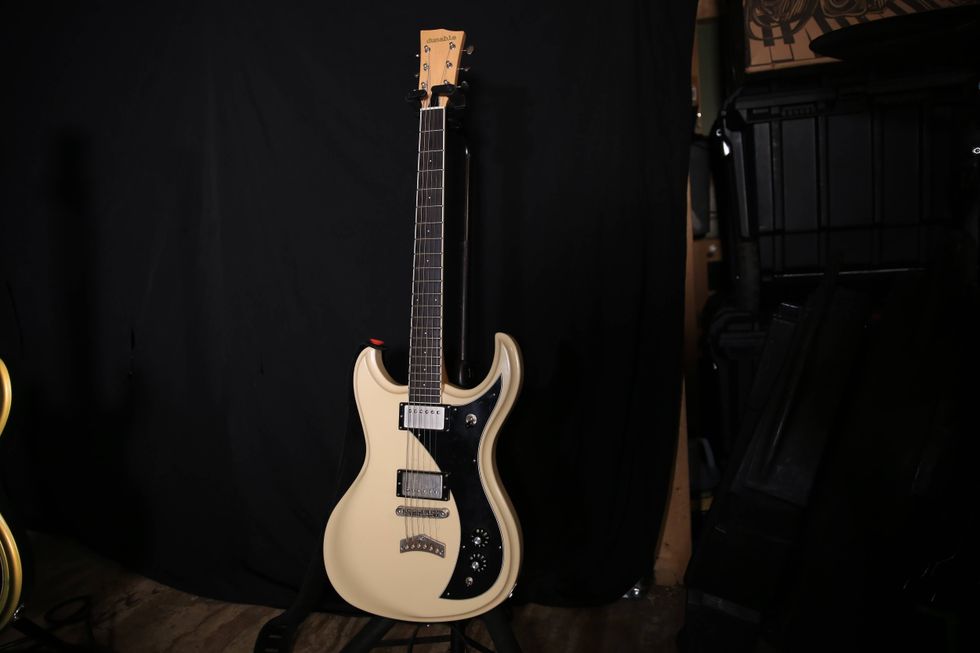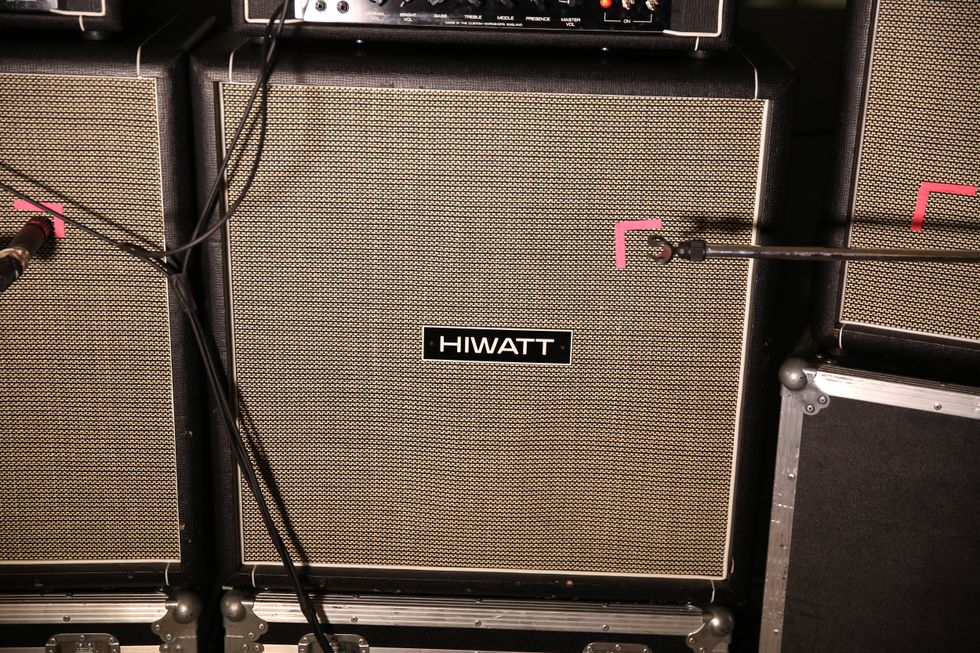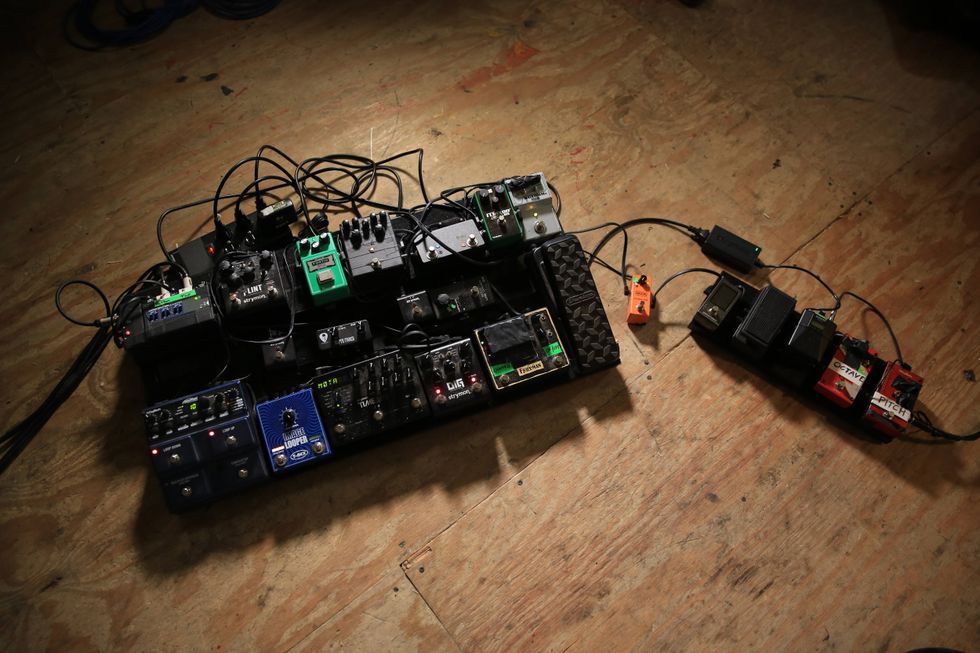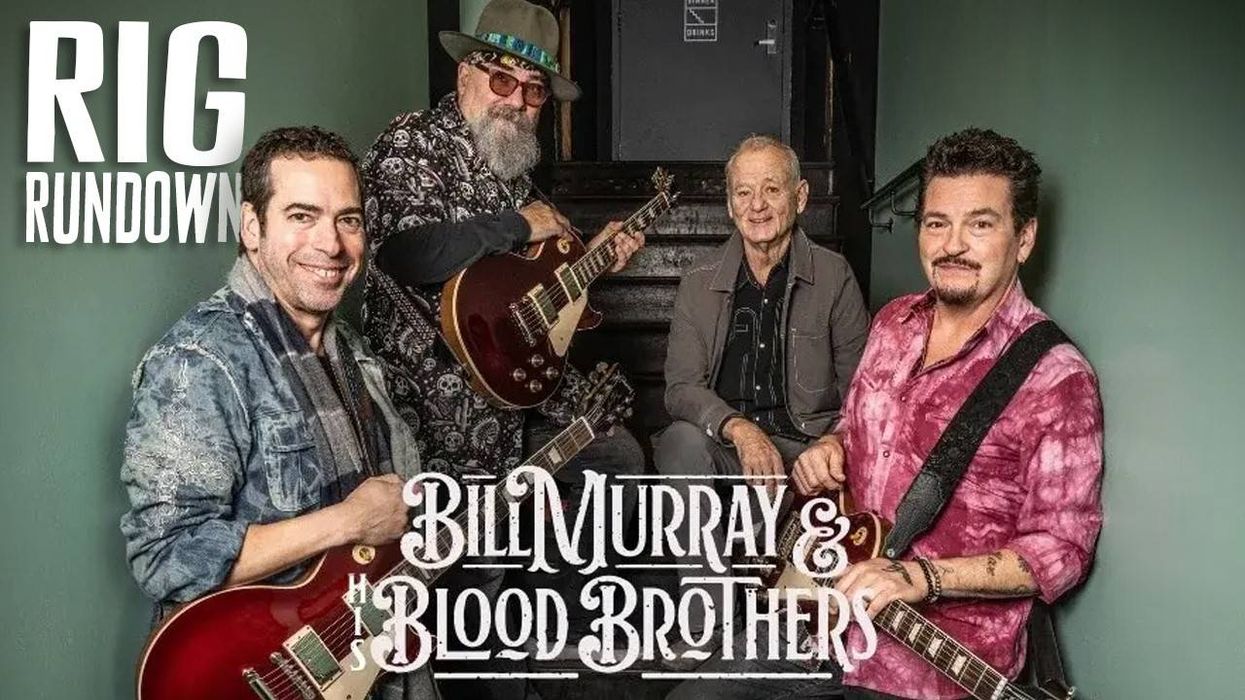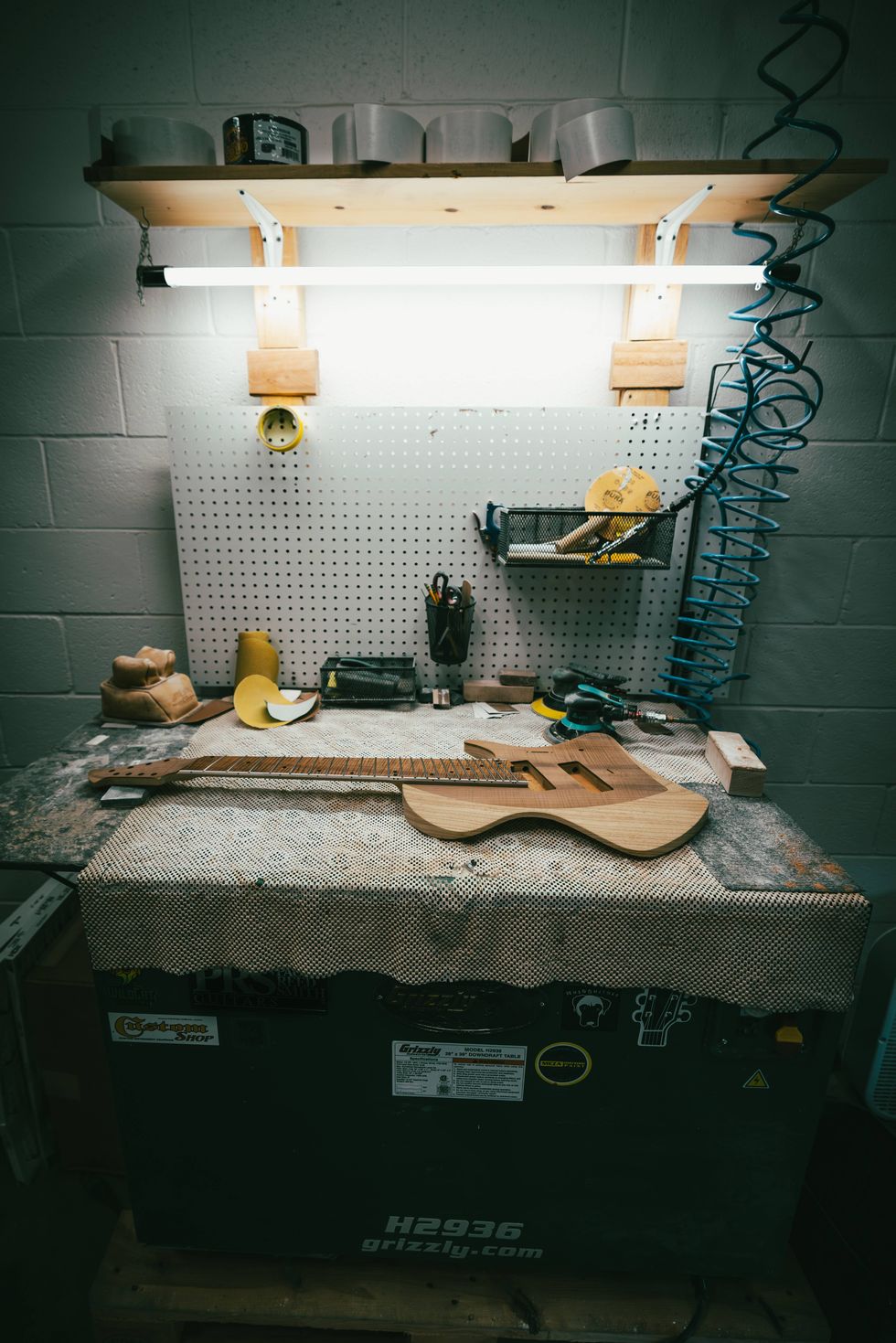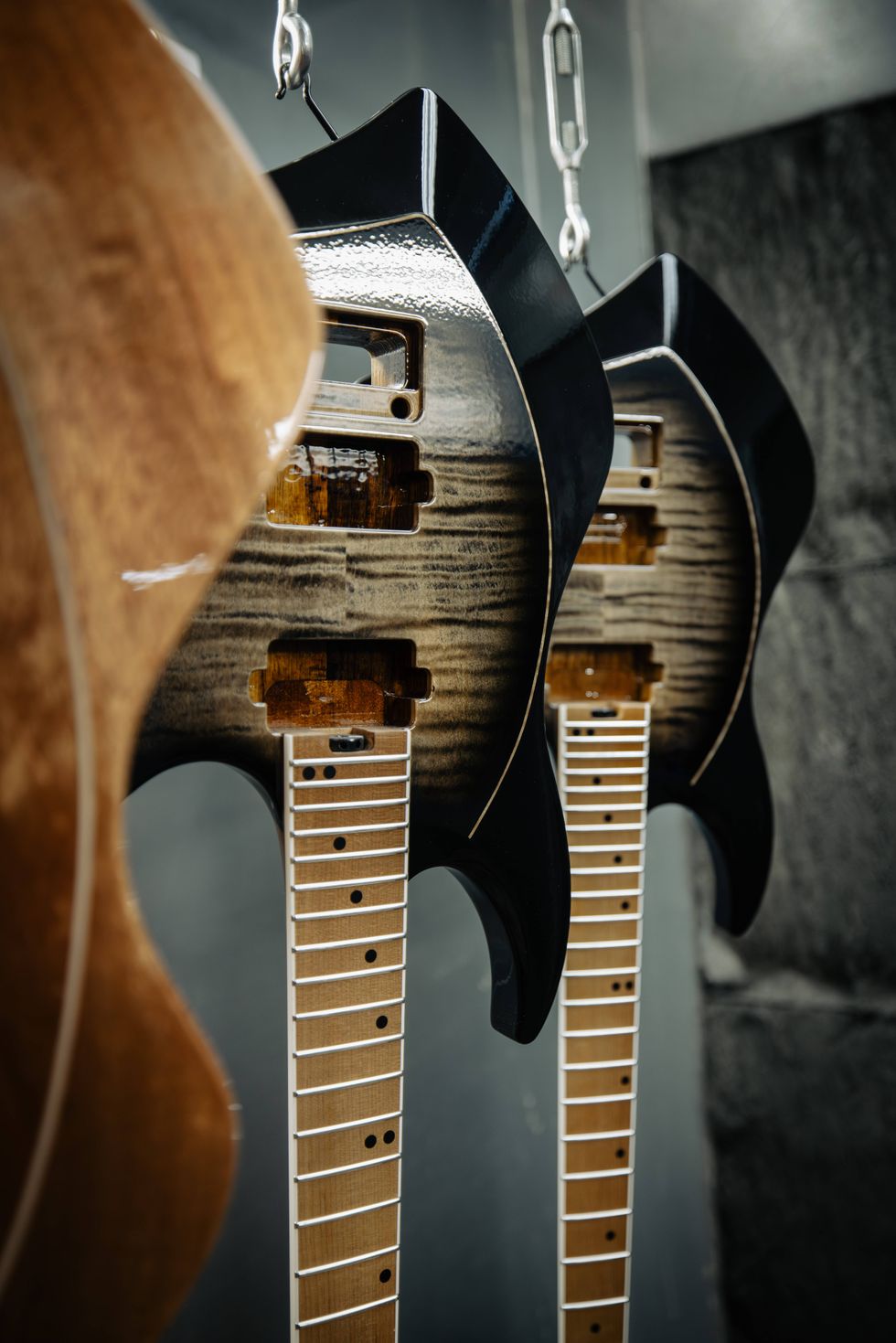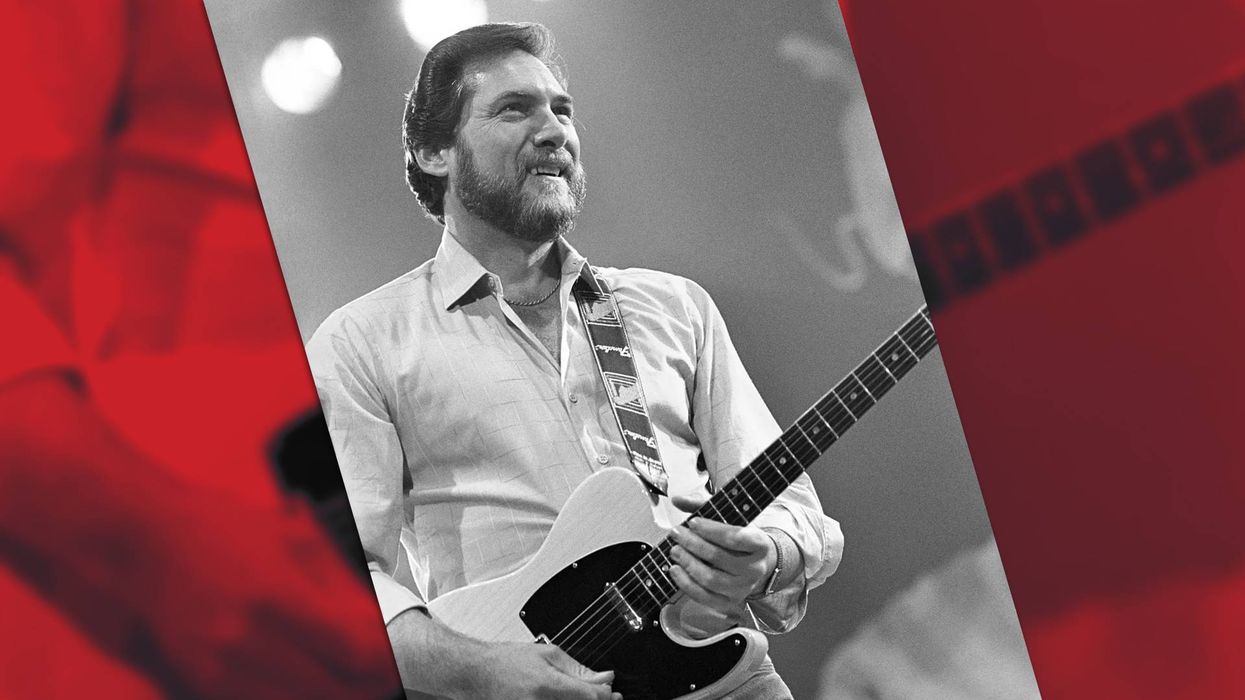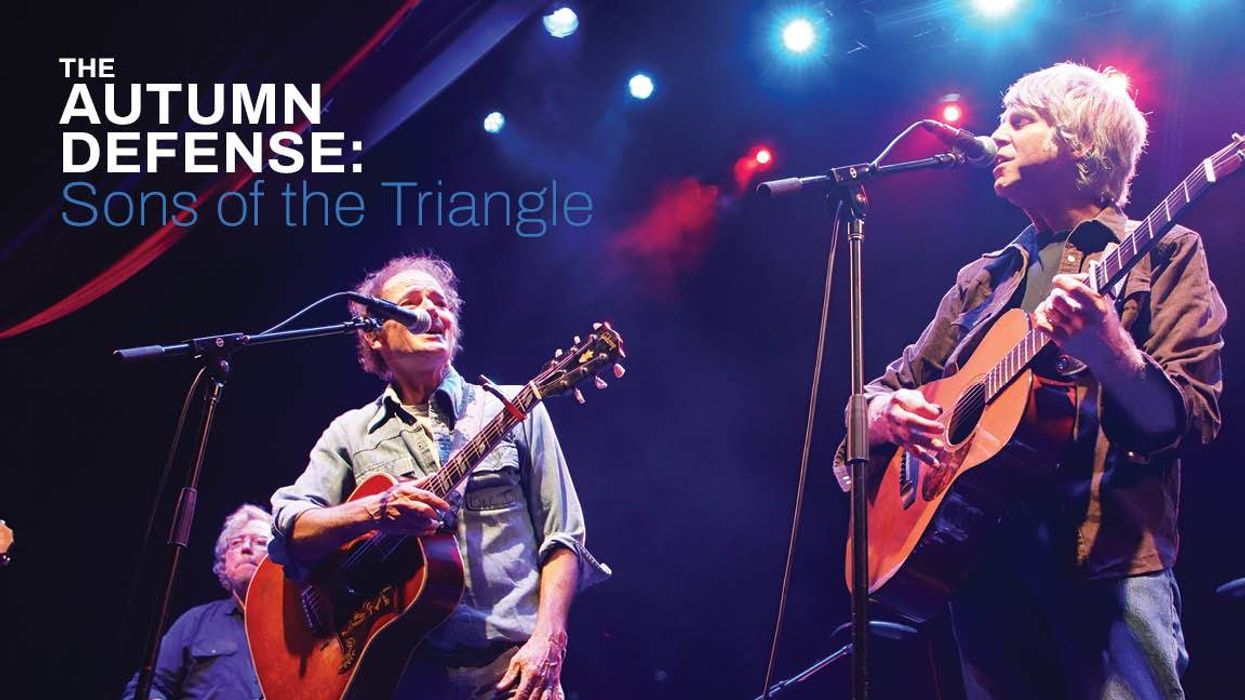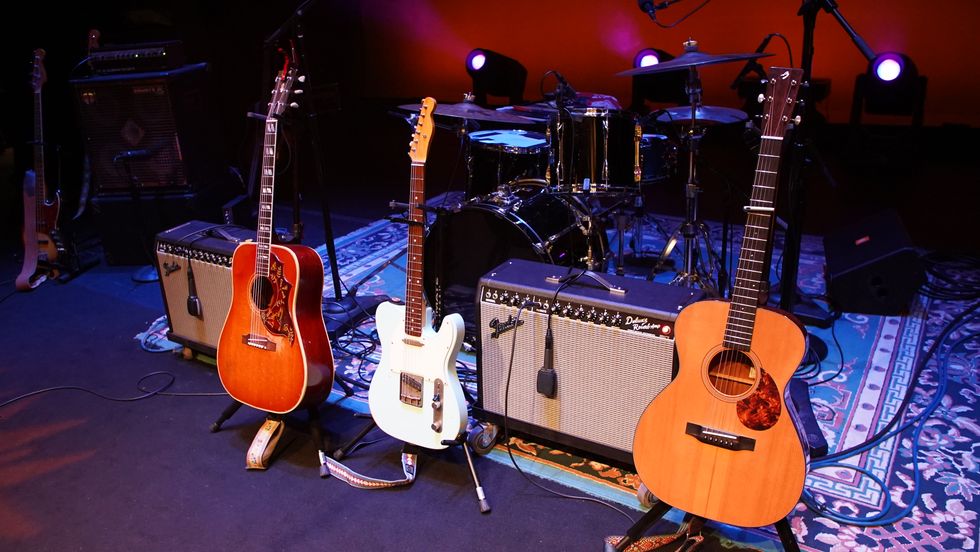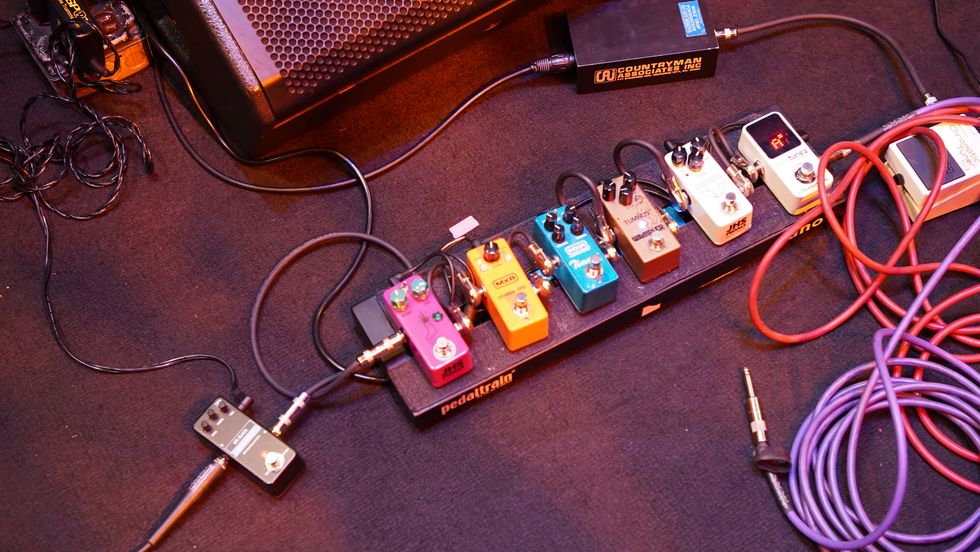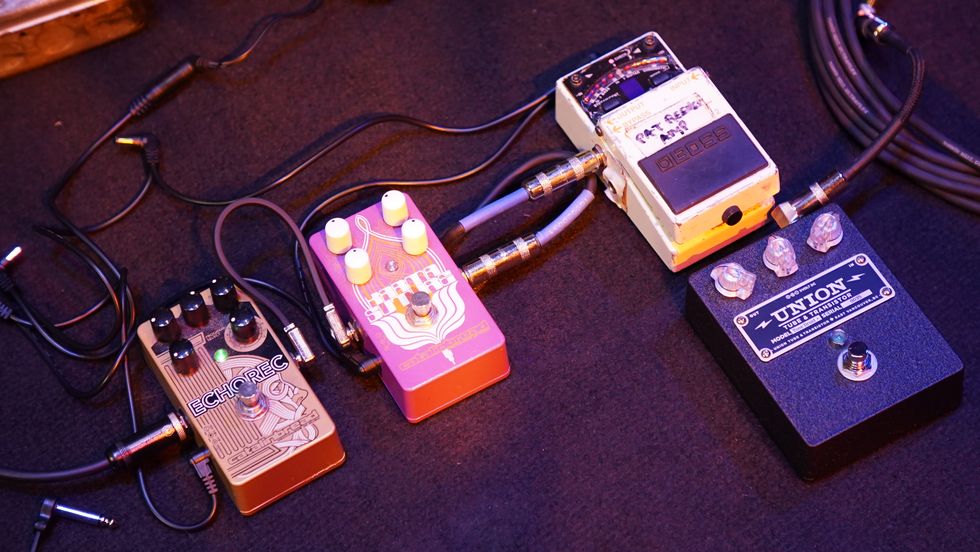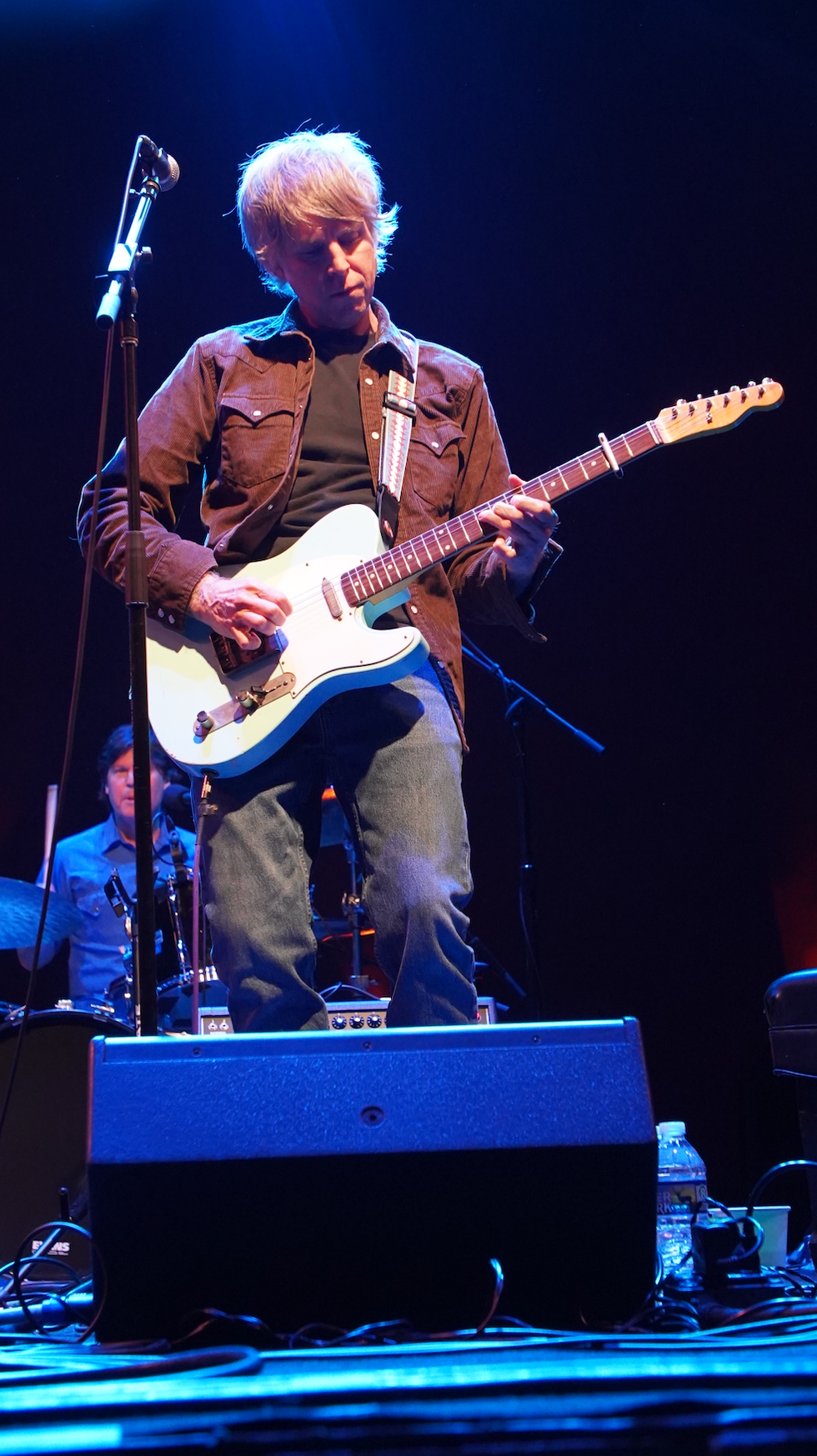“I wouldn’t say that All Washed Up was my first choice for the title of the new record,” says Cheap Trick guitarist Rick Nielsen from the living room of his Rockford, Illinois, home. “But hey, I’ve always said that if you have to tell people you’re cool, then you’re not!”
Nielsen and his longtime bandmates, vocalist and guitarist Robin Zander and bassist Tom Petersson, are not among those who need to toot their own horns. Six decades into a career that has seen the band inducted into the Rock and Roll Hall of Fame, invited to collaborate with John Lennon, name-checked by Jerry Garcia, and cited as a primary influence by bands as disparate as Mötley Crüe and Nirvana, Cheap Trick certainly have nothing left to prove. Yet the group, whose deft ability to combine muscular riffs, edgy subject matter and unforgettable power-pop hooks continues to tour relentlessly—they’ve long since passed the 5,000-show mark—and record with a regularity that might wind bands half, or even a third, their age.
All Washed Up, the band’s 21st studio album, captures a Cheap Trick that’s still in top form and able to effortlessly deliver snarling rockers like the swaggering “Riff That Won’t Quit” and thunderous “Bet It All” that harken back to such early classics as “Stiff Competition” and “Daddy Should Have Stayed in High School.” The group’s ability to shift gears and settle into Beatles-inspired midtempo numbers is also on clear display, and tracks like the swirling “The Twelve Gates” and ethereal “The Best Thing” are melodically and lyrically compelling enough to stand shoulder-to-shoulder with decades-old fan favorites like “Downed” and “Heaven Tonight.”
“Luckily, we never progressed,” says Nielsen of the band’s ability to remain on musical track. “We still like the Beatles. We still like the Stones and AC/DC. We still love the Who. And most importantly, we still love making records.”
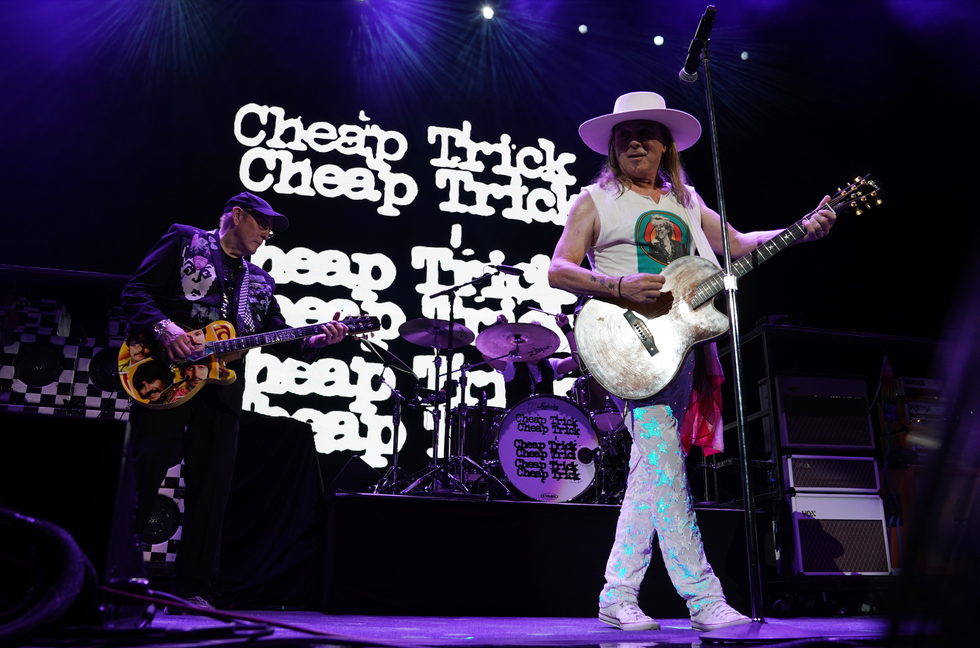
Rick and Robin onstage; note Nielsen’s “Uncle Pepper” Hamer, custom-finished for him for Cheap Trick’s performance of the Beatles’ Sgt. Pepper’s Lonely Hearts Club Band in 2009.
Photo by Jeff Daly
RICK NIELSEN’S LIVE RIG
Guitars
- Various Hamer Standards
- Fender Custom Shop Tribute Series Jeff Beck Esquire
- 1984 Gibson Aldo Nova Les Paul with Explorer headstock
- Epiphone “Dwight”
- Gibson Explorer
- Gibson Flying V
- 2016 Gibson Custom Mike McCready Les Paul
- Various other Gibson Custom Shop Les Pauls
- GMP Mandocello
Amps
- Modified silver-panel Fender Deluxe Reverb
- Marshall JMP
- Orange Rockerverb
Effects
- Dunlop MXR Micro Amp
- Dunlop DCR2SR rack-mounted Cry Baby
- Shannon Phaser
Strings, Picks, & Accessories
- D’Addario EXL 110 strings (.010–.046)
- D’Andrea picks
- Shure AD4Q wireless
“It’s one the few things that we’re actually really good at,” Petersson adds from his home in Nashville. “We’re lucky enough to still have an outlet to release our music, so we send ideas back and forth and what we end up doing is what we as music fans would like to hear from a record. What we’re not as good at though,” he continues, “is picking out what other people want to hear!”
There to assist with this last task is long-time Cheap Trick producer and self-professed super fan Julian Raymond (the Struts, Brian Setzer). “Julian, even though at this point we basically treat him like a member of the band, has the perspective of what a fan would like us to do, and it really brings out the best in us,” says Petersson. Adds Nielsen, “He knows us better than we know ourselves. He’ll say, ‘I really liked what you did on “He's a Whore” from your first album. Can you get that sound and do something like that here?’”
“At this point in their careers, the guys in Cheap Trick don't care about anything but being happy and doing what they want to do,” says Raymond, also calling from Nashville, where the bulk of All Washed Up was tracked at Blackbird Studios. “Those first four Cheap Trick records from the late ’70s—the debut, In Color, Heaven Tonight, and then Dream Police, those are the best songs on earth,” he continues. “The only problem is that the band sounds all slendered down, because the producer of several of those albums was looking to get on the radio and get hits. It’s a much different vibe from what the band does live, which is so brash and heavy. So now we try to capture that feel and power whenever we make a record.”“I’ve always said that if you have to tell people you’re cool, then you’re not!”—Rick Nielsen
Nielsen is widely known as an avid guitar collector, with a stash in the hundreds that includes both incredibly rare and valuable vintage instruments like original late-’50s Gibson Explorers and Les Pauls and off-the-wall custom one-offs like his iconic checkerboard Hamer 5-neck. But he brings only a limited number of guitars with him to the studio. “This time, I had a couple of my Dwights [in the ’60s, Epiphone manufactured guitars under the Dwight brand name for Sonny Shields Music in East St. Louis], a couple of my Hamer Explorer-shaped Standards, a ’59 Les Paul, and a Telecaster. And I just grab the one I think is good for the song,” he says. The sessions also relied on only a trio of guitar amps: a Marshall half stack, a Vox AC30 and one of the Paul Rivera-modified silver-panel Fender Deluxe Reverbs that have been Nielsen’s go-tos since the ’70s.
TOM PETERSSON’S LIVE RIG
Basses
- Brooks EXP-12-TP 12-string
Amps
- Orange OR30 with Orange 4x12 cab
- Fender Super Bassman with Fender 4x12 cab
Effects
- Tech 21 SansAmp Bass Driver DI
Strings, Picks, & Accessories
- D’Addario EXL170-12 strings
- Junger Pyramid picks
- Shure AD4Q wireless
- Radial JD7 splitter
- D’Addario foam earplugs
For Raymond, limiting the number of choices available to Nielsen is crucial to ensuring that the guitarist remains engaged in the creative process. “When you start getting down that road of auditioning 10 different amplifiers and 15 different guitars with Rick, he just gets bored,” says Raymond. “He doesn't have the patience.”
Nielsen likes to work fast when he’s in the studio, often keeping the basic track that was played live with the band. “I know what I want to do and have it down, so I’ll often keep that track and then embellish on it afterwards,” he says. The guitarist also rarely doubles his rhythm tracks exactly, but instead has the guitars engage in a push-and-pull dialogue that introduces tension and a ragged intensity to songs like the album’s title track. “Rick doesn’t double his tracks exactly because he’s sloppy—and I mean that in the best possible way,” Raymond explains. “You can hear what the guitar on the left is doing, and you can hear what the guitar on the right’s doing. That’s what I love about the way he plays. It’s almost kind of a punk-rock style in more of a rock and roll manner, you know?”
“What we end up doing is what we as music fans would like to hear from a record.”—Tom Petersson
“Of course, we could take those tracks and make them match as perfect doubles in Pro Tools,” he continues. “But you don’t want that. That’s not Rick’s sound.”
Where the lead guitar work on All Washed Up is concerned, Nielsen takes one of two approaches: the first, melodic and impeccably structured, like the rotary-speaker enhanced break on the ballad “Best Thing,” and the other, manically chaotic and visceral, like the hair-raising screech fest on “Bet it All.”
“I’m no guitar virtuoso like Satch or Vai, so I don’t try to make something real fast and real cool,” he says. “But I do make it so my solo has something to do with the actual melody of the song. Then when I run out of smart ideas, there can be a lot of noise and unison bends and screeches and all that stuff!”
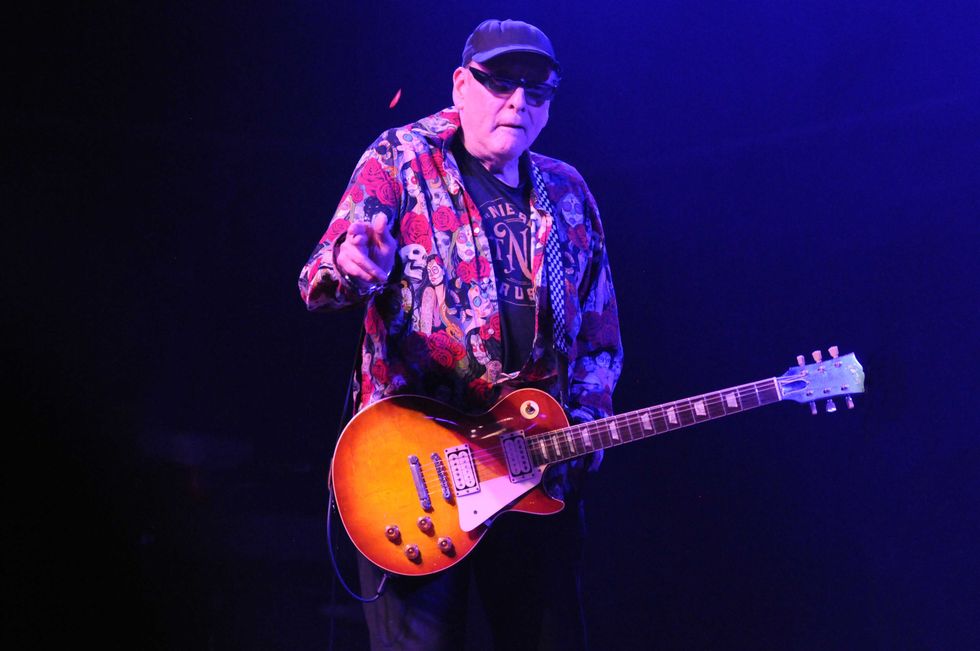
Nielsen onstage at the Vixen in McHenry, Illinois, with his family band, the Nielsen Trust, on January 10, 2025.
Photo by Jim Summaria
From a producer’s standpoint, Raymond says that, much like when he’s recording the guitarist’s rhythm tracks, cutting Nielsen’s frenetic leads is an exercise in catching lightning in a bottle. “Rick plays guitar like it’s his last day on earth,” he says. “He just bounces off the walls and plays, and it’s so much fun to watch because you don’t have to give him any direction. And he gets those solos quick. It’s just his spirit—the spirit of the way he thinks and plays. You don’t fix that. You don’t try to manipulate that. That’s the soul of Cheap Trick to me.”
“I’m no guitar virtuoso like Satch or Vai, so I don’t try to make something real fast and real cool.”—Rick Nielsen
If Nielsen’s methodology has a seat-of-the-pants spontaneity at its core, Petersson’s approach to recording the bass tracks on All Washed Up is decidedly more considered. “We pretty much used a different bass on every song,” he says. “There were two Gibson Thunderbirds, which have been my go-to recording basses since the beginning of the band, a ’66 non-reverse and a ’64 Thunderbird II. I was introduced to those by [PG columnist] Jol Dantzig, who would end up at Hamer guitars and now builds under his own name. He said, ‘Tom, you’ve got to try these Thunderbirds. They’re really cool.’ To me they're just a little clunkier and dirtier than a P-Bass, and to me, the P-Bass is the best all-around bass ever. I mean, it’s a subtle difference. So, in the end, when it’s on a recording, who can tell the difference? Probably no one!”
True to his word, Petersson also used four Fender Precision basses—a ’53, ’55, ’56, and a ’71—on All Washed Up. “And then a ’65 Jazz Bass with flatwound strings and one with roundwounds, a Rickenbacker 4003 with flatwounds, a 1960 Gibson EBO with a body like a double-cut Les Paul Junior, a Hofner 500/2 Club Bass, and my Gretsch White Falcon 12-string bass,” he adds. Petersson is widely credited with conceiving the 12-string bass, an instrument later adopted by players like Jeff Ament of Pearl Jam and Doug Pinnick of King’s X, but he generally reserves the thunderous buzz of this sometimes-unruly instrument for the stage. “I don’t usually use that much 12-string on the records—mainly just for overdubs,” he explains. “Because I feel it’s like a 12-string guitar; it’s cool, but do you really want to have that on everything? But this time, there’s way more of it on there. We just thought, ‘Why not? Let’s just do the song the way it will sound live.’”
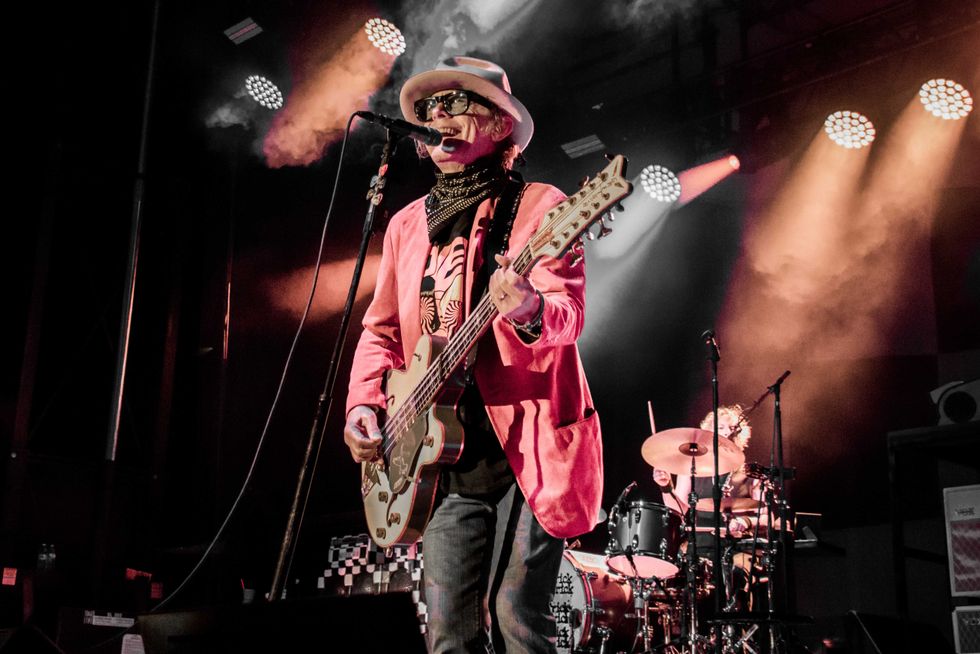
Petersson performs with Cheap Trick at the Songs4Soldiers benefit concert at Bolm-Schuhkraft Park in Columbia, Illinois, on September 16, 2023.
Photo by Jen Gray
Both onstage and in the studio, Petersson’s beefy, overdriven tone booms, growls, and sustains, perfectly complementing his Paul McCartney, John Entwistle, and Ron Wood (when he played with the Jeff Beck Group)-inspired lines and fills. “Tom is my favorite bass player on earth,” says Raymond. “His sound has enormous bottom end, but it’s totally distorted, like he's the rhythm guitar player in the band.”
To achieve his signature sound, Petersson employs a multi-amp setup that can be changed to adapt to the material at hand. “I use a combination of stuff, all through Orange or Hiwatt 4x12 cabinets,” he reveals. “There’s a 30-watt Orange for the distortion, a 300-watt Orange, a 20-watt Hiwatt Maxwatt that was really cool, a 400-watt Hiwatt bass head and then my old Hiwatt Lead 100 that I’ve had since 1972. That was actually the only amp that I had when we made the first album.”
And where many bass players customarily also record a clean DI signal to complement their amplified sound, Petersson strongly disapproves of the practice. “I have my sound, so once it’s there, why give people the opportunity to change it?” he says. “Inevitably, it will get blended in there somehow or they’ll just use the direct. I play all my parts with distortion, so can you imagine how lame and plinky it’s going to sound without that? I want it to sound like the Who!”
At the sound of those two last words, Nielsen’s eyes light up and his enthusiasm can’t be contained. “The Who were the ultimate live band,” he interjects. “They were the greatest: loud and nasty and melodic. They had everything, and it was like nobody could keep up with it.”
“Luckily, we never progressed. We still like the Beatles. We still like the Stones and AC/DC.”—Rick Nielsen
“I saw them open for Herman’s Hermits, and when they smashed their gear after only playing for, like, 20 or 25 minutes, I didn’t completely get it,” Petersson chimes in, also switching into fan mode. “But then right after that tour, they were in the States on their own, and I saw them again in Lake Geneva, Wisconsin. It was the real deal. Once they built it up to a frenzy at the end, it all made sense. It wasn’t just some fake show of smashing gear. It was like we were losing our minds because it was so great.”
“We’ll be playing a few songs with the Who on their farewell tour in Los Angeles soon, which is amazing,” says Nielsen. “But I remember the first time we played with them, in 1979, at Zeppelinfeld in Nuremberg, Germany—Pete Townshend walked up to me and said, ‘Rick, how’d you get that sound on your live record, At Budokan? And I was like, ‘Pete, you’re the guy that did Live at Leeds! The greatest live album of all time.’”
Nielsen pauses to give his trademark smirk. “What are you asking me for?”Special thanks to Cheap Trick techs Chet Haun and Mark Newman for their live rig assistance.


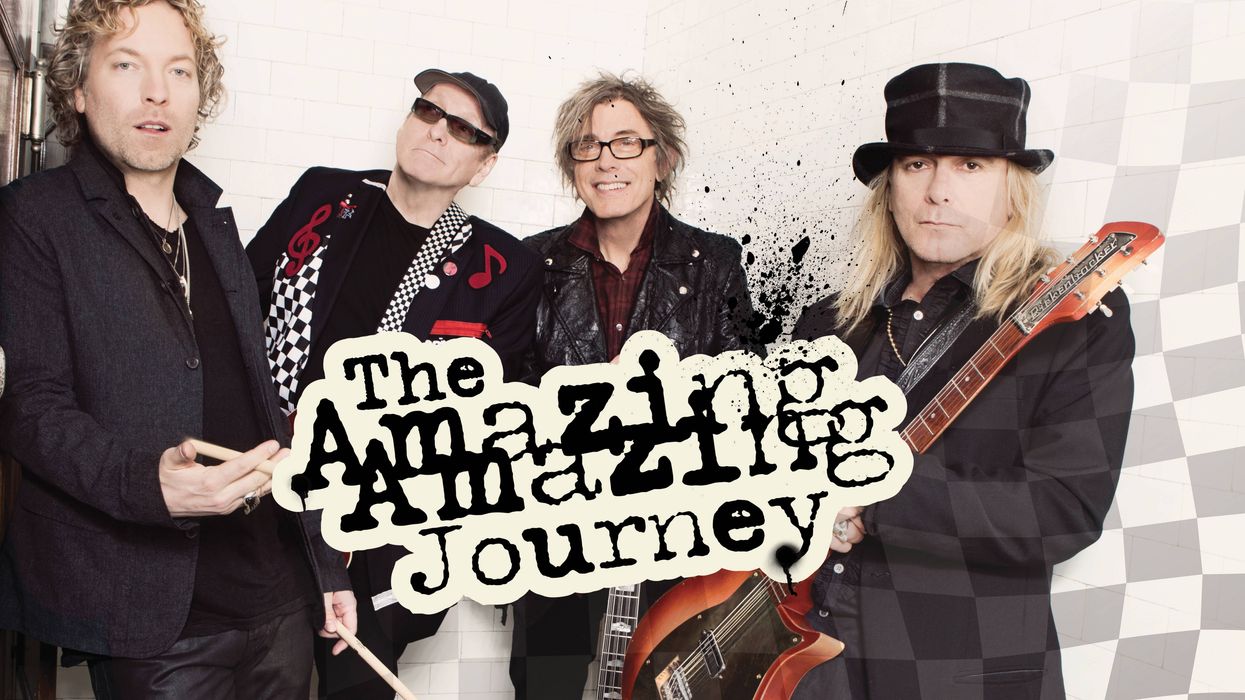



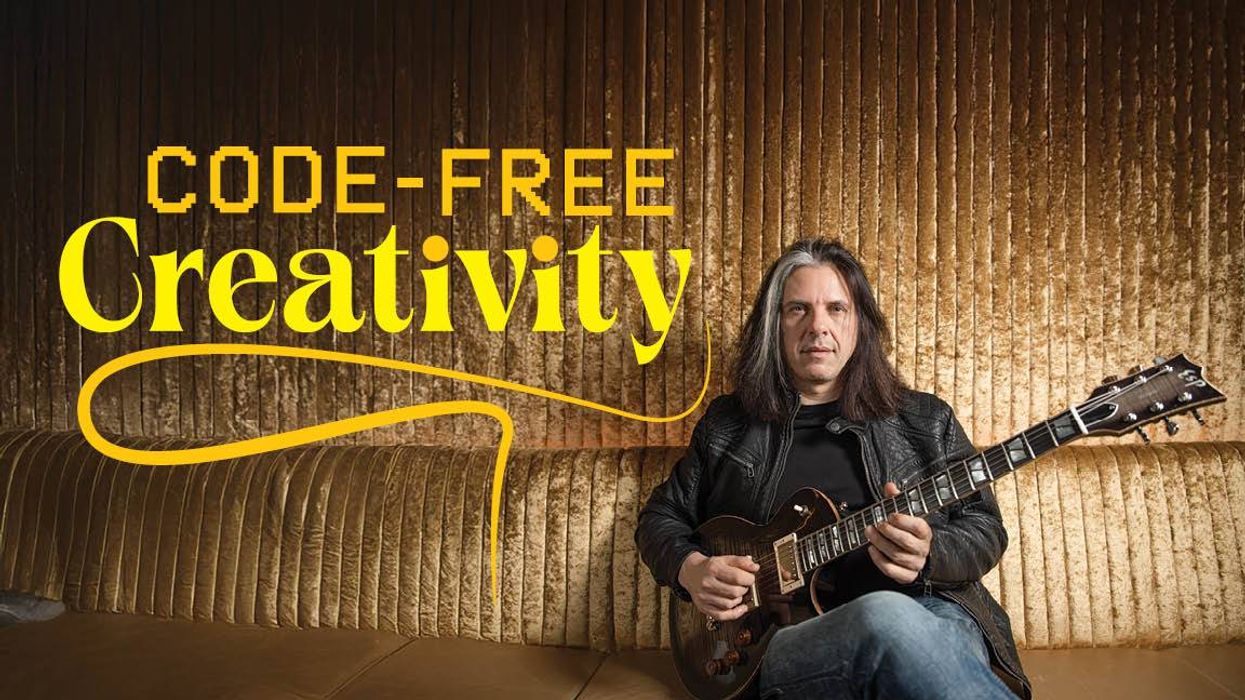
![Rig Rundown: Russian Circles’ Mike Sullivan [2025]](https://www.premierguitar.com/media-library/youtube.jpg?id=62303631&width=1245&height=700&quality=70&coordinates=0%2C0%2C0%2C0)

